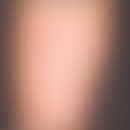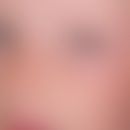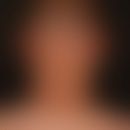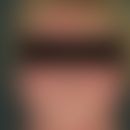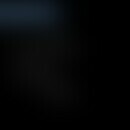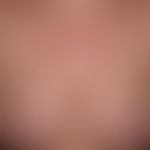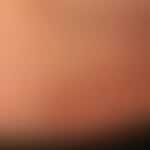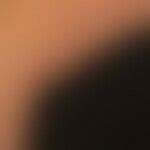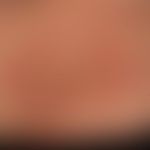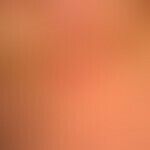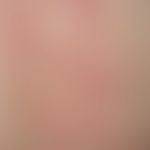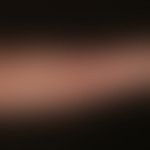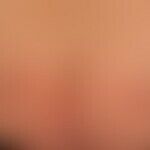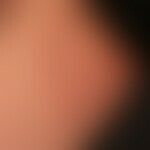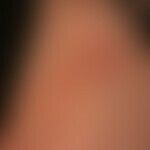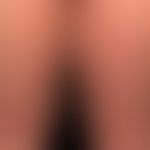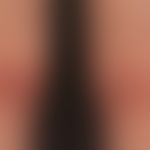Synonym(s)
HistoryThis section has been translated automatically.
Chorzelski and Jablonska
DefinitionThis section has been translated automatically.
Rare, chronic, autoimmunologic, blistering dermatosis with linear IgA and C3 deposition at the dermo-epidermal junction zone, which belongs to the pemphigoid group. A basic distinction is made between:
IgA-linear dermatosis (LAD) in adulthood:
- idiopathic IgA-linear dermatosis
- IgA-linear dermatosis triggered by medication (e.g. At1 receptor blockers)
IgA linear dermatosis in children = benign chronic bullous dermatosis in children
You might also be interested in
Occurrence/EpidemiologyThis section has been translated automatically.
Incidence (for Germany and France): Approximately 0.02-0.05/100,000 population/year. In larger contingents of blistering diseases, less than 1% of patients with linear IgA dermatosis are found. The disease appears to be more common in China and some regions of Africa.
In children, the disease is the most common blistering autoimmune disease!
EtiopathogenesisThis section has been translated automatically.
Basically, from an etiopathogenetic point of view, a distinction must be made between 2 forms of LAD in adulthood.
- Idiopathic LAD: In this variant, associations with other autoimmune diseases and malignant tumors have been described.
- Drug-induced LAD: The following drugs have been described as triggers: vancomycin (over 50% of drug-induced cases in adults are due to vancomycin ), diclofenac, glibenclamide, iodine, penicillin, cephalosporins, non-steroidal anti-inflammatory drugs, piperacillin, interferon gamma, sulbactam, cytostatics (Lammer J et al. 2019), atezolizumab, COVID-19 vaccination (Zouh H et al. 2023); romiplostim (thrombopoietin receptor agonist/Heser S et al. 2023). Apparently, the triggering drugs can cross-react with the target epitope, change the conformation of the epitopes or make previously hidden antigens accessible to the immune system (Paul C et al. 1997).
A high percentage of IgA antibodies (60% of cases), a lower percentage of IgG antibodies (30%) and less frequently both types of antibodies (20%) against autoantigens were detected.
Target autoantigens are the 120 kDa protein LAD-1 (produced by proteolysis at the NH2 terminus of the extracellular domain of BP 180 = bullous pemphigoid antigen = type XVII collagen - see also under COL17A1 gene).
IgA antibodies against BP230 (see dystonin below) are rarer. There are no differences in the occurrence of antibodies between adults and children(chronic bullous dermatosis of childhood).
Ultrastructurally, the antigens can be detected on the anchoring fibrils of the lamina lucida and on the lamina densa.
PathophysiologyThis section has been translated automatically.
Several HLAs, including HLA-B8, HLA-DR3, HLA-DQ2 and HLA-cw7, have been associated with the occurrence of linear IgA dermatosis.
ManifestationThis section has been translated automatically.
Most common blistering disease of childhood, usually appearing for the first time at the age of 2-4 years (average 2.7 years). Boys are more frequently affected in childhood (m:w= 1.78:1.0).
Onset in adulthood usually between 20-40 LY and after the 6th decade (in larger contingents, the average in adults was around 60 years). In adulthood w:m= 2:1
LocalizationThis section has been translated automatically.
Frequent is the affection of the face (especially perioral and ears) and / or the capillitium.
Trunk, here without special predilection sites, possibly with emphasis on the sacral region, groin and anogenital region. This (classic large blistered form) is indistinguishable from bullous pemphigoid by its distribution pattern.
Variants with clinical analogy to dermatitis herpetiformis (small vesicles) show an emphasis on the extensor side (elbow, sacral region) of small vesicles grouped herpetiformly or "jewel-like".
Variants with clinical analogy to the scarring mucous membrane pemphigoid show mucosal involvement of oral mucosa, pharynx, nose, eyes.
ClinicThis section has been translated automatically.
Moderately to intensely pruritic, urticarial plaques with marginal vesicular or bullous lesions, often herpetiform or rosette-like, but also anular or garland-like. The rosette form is caused by the episodic appearance of ring-shaped vesicular neoplasms around older blisters that have not yet healed.
In individual cases, the picture of bullous dermatosis may be complemented by IgA purpura (Schönlein-Henoch purpura).
Remark: The clinical pictures correspond on the one hand to dermatitis herpetiformis, on the other hand also to bullous pemphigoid. In rare cases there are also extensive skin manifestations reminiscent of erythema exsudativum multiforme, also under the clinical findings of Stevens-Johnson syndrome.
Mucosal changes are found in 50%-80% of patients, especially in the oral mucosa and conjunctiva. Ocular involvement may result in scarring and even blindness.
Less commonly associated are:
In rare cases, associations with angioimmunoblastic T-cell lymphoma (AITL), an aggressive form of peripheral T-cell lymphoma, have been described (Colmant C et al 2020).
HistologyThis section has been translated automatically.
The histology of LAD is not diagnostic!
Both subepidermal blistering with infiltrate of lymphocytes and numerous neutrophil granulocytes, few eosinophil granulocytes and occasionally intrapapillary microabscesses (see DD for dermatitis herpetiformis) and subepidermal blistering with perivascular and interstitial lymphocytic infiltrate are found.
There are cases in which eosinophilic granulocytes dominate (differentiation from bullous pemphigoid is then difficult).
Immunoelectron microscopy can distinguish 2 types, the more common lamina lucida type and the sublamina densa type.
Direct ImmunofluorescenceThis section has been translated automatically.
The DIF shows linear IgA deposits at the dermoepidermal junction zone (100%), further but weaker C3 (50%) and IgG (30%).
In slit examinations (preparation is pretreated in 1 M NaCl solution), the deposits are found on the dermal or epidermal side; rarely on both sides.
Immunoelectron microscopy reveals deposits on the lamina lucida and the sublamina densa.
Differential diagnosisThis section has been translated automatically.
Clinical:
- Bullous pemphigoid
- Pemphigoid, scarring (mucous membrane pemphigoid)
- Dermatitis herpetiformis Duhring
- Epidermolysis bullosa acquisita
- bullous impetigo
- bullous drug exanthema
- Erythema multiforme.
Histologic:
Complication(s)(associated diseasesThis section has been translated automatically.
Associated diseases have mostly been described in single case reports:
- Crohn's disease
- Gluten-sensitive enteropathy (0-24%); Note: this constellation is questioned by some authors!
- ulcerative colitis
- Systemic lupus erythematosus
- Dermatomyositis
- Malignancies (B-cell lymphoma, myeloid leukemia)
If the conjunctiva are affected, scarring and blindness may occur.
External therapyThis section has been translated automatically.
Antipruriginous and anti-inflammatory treatment e.g. with 3-5% polidocanol lotio(e.g. Optiderm, R200) alternating with weak to medium-strong glucocorticoids such as 1% hydrocortisone cream(e.g.hydrogals, R119 ), 0.1% hydrocortisone-17-butyrate cream (e.g. Laticort), 0.1% methylprednisolone cream (e.g. Advantan), 0.1% mometasone fat cream(e.g. Ecural). Treatment with synthetic tanning agents, e.g. Tannosynt, Tannolact, has also proven to be effective.
Internal therapyThis section has been translated automatically.
The first choice is DADPS (e.g. Dapson-Fatol). Gradual dosage, initially 50-75 mg/day, after 2 weeks full dose from 100-150 mg/day to max. 300 mg/day. Maintenance dose according to clinic (wide range of variation). Initially adjuvant prednisone (e.g. Decortin) 20-40 mg/day p.o. If the results improve, continue dapsone as monotherapy, if the results deteriorate, temporary adjuvant administration of prednisolone. At the earliest after 6 months of freedom from symptoms.
If the clinical success is unsatisfactory, the use of azathioprine (e.g. Imurek) 1-2 mg/kg bw/day in combination with systemic corticoids may be considered. Further treatment options are cyclophosphamide, mycophenolate mofetil, colchicine, methotrexate and ciclosporin A.
To reduce itching, additional systemic administration of antihistamines such as desloratadine (e.g. Aerius) 5 mg/day p.o. or levocetirizine (e.g. Xusal) 10 mg/day p.o. may be necessary.
Dietetic measures are largely ineffective in IgA linear dermatosis.
Operative therapieThis section has been translated automatically.
Progression/forecastThis section has been translated automatically.
In idiopathic LAD, a course lasting for years must be expected.
In the case of drug-induced LAD, healing can be expected within a few weeks/months after discontinuation of the triggering medication.
While the skin lesions heal without scarring, ocular involvement can lead to scarring and, in extreme cases, blindness.
The prognosis of the disease also depends on the organ involvement: ulcerative colitis, Crohn's disease, IgA nephropathy, gluten-sensitive enteropathy.
Note(s)This section has been translated automatically.
Linear IgA dermatosis, bullous pemphigoid, pemphigoid gestationis and mucous membrane pemphigoid have the identical target antigen (BP 180/type VIII collagen). In contrast to these, however, the autoantibody of linear IgA dermatosis belongs to the IgA class.
The role of ulcerative colitis as rare concomitant disease of IgA linear dermatosis remains unclear so far. It can precede the LAD by years.
Case report(s)This section has been translated automatically.
LiteratureThis section has been translated automatically.
- Allen J, Wojnarowska F (2003) Linear IgA disease: the IgA and IgG response to dermal antigens demonstrates a chiefly IgA response to LAD 285 and a dermal 180-kDa protein. Br J Dermatol 149: 1055-1058
- Avci O et al (2003) Acetaminophen-induced linear IgA bullous dermatosis. J Am Acad Dermatol 48: 299-301
- Chorzelski TP, Jablonska S (1975) Diagnostic significance of immunofluorescent pattern in dermatitis herpetiformis. Int J Dermatol 14: 429-436
- Chorzelski TP, Jablonska S (1979) IgA linear dermatosis of childhood. Br J Dermatol 101: 535-542
- Choudhry SZ et al. (2015) Vancomycin-induced linear IgA bullous dermatosis demonstrating the isomorphic phenomenon. Int J Dermatol 54:1211-1213
- Colmant C et al. (2020) Linear IgA dermatosis in association with angioimmunoblastic T-cell lymphoma infiltrating the skin: A case report with literature review. J Cutan Pathol 47:251-256.
- Gameiro A et al. (2016) Vancomycin-induced linear IgA bullous dermatosis: associations. Dermatol Online J 22:13030/qt8k63322n.
- Georgi M et al. (2001) Autoantigens of subepidermal bullous autoimmune dermatoses. Dermatology 52: 1079-1089
- Heyer S et al. (2023) 33-year-old man with plaques and blisters. JDDG 22: 857-859
- Hollo P et al. (2003) Linear IgA dermatosis associated with chronic clonal myeloproliferative disease. Int J Dermatol 42: 143-146
- Kim JS et al. (2015) Concurrent Drug-Induced Linear Immunoglobulin A Dermatosis and Immunoglobulin A Nephropathy. Ann Dermatol 27:315-318
- Klein A et al. (2010) Linear IgA dermatosis with ocular involvement in association with ulcerative colitis. Dermatology 61:55-57
- Lammer J et al. (2019) Drug-induced Linear IgA Bullous Dermatosis: A Case Report and Review of the Literature. Acta Derm Venereol 99: 508-515.
- Lings K et al. (2015) Linear IgA bullous dermatosis: a retrospective study of 23 patients in Denmark. Acta Derm Venereol 95: 466-471
- Palmer RA et al. (2001) Vancomycin-induced linear IgA disease with autoantibodies to BP180 and LAD285. Br J Dermatol 145: 816-820
- Paul C et al. (1997) Drug-induced linear IgA disease: target antigens are heterogeneous. Br J Dermatol 136:406-411.
- Pena-Penabad C et al. (2003) Linear IgA bullous dermatosis induced by angiotensin receptor antagonists. Am J Med 114: 163-164
- Romani L et al. (2015) A Case of Neonatal Linear IgA Bullous Dermatosis with Severe Eye Involvement. Acta Derm Venereol 95:1015-1017
Zone JJ (2001) Clinical spectrum, pathogenesis and treatment of linear IgA bullous dermatosis. J Dermatol 28: 651-653
-
Zou H et al (2023) Linear IgA bullous dermatosis after COVID-19 vaccination. Int J Dermatol 62:e56-e58.
Incoming links (17)
Acquired haemophilia A;; Angioimmunoblastic T cell lymphoma; Autoimmune dermatoses, bullous; Candesartan; Cimicose; COL17A1 gene; Dermatitis herpetiformis; Gluten-Related Dermatological Disorders; Hydrophilic hydrocortisone acetate cream 0.25/0.5 or 1% (nrf 11.15.); Iga; ... Show allOutgoing links (46)
Angioimmunoblastic T cell lymphoma; Antihistamines, systemic; Azathioprine; Bullous Pemphigoid ; Candesartan; Cephalosporins; Ciclosporin a; COL17A1 gene; Colchicine; Contagious impetigo; ... Show allDisclaimer
Please ask your physician for a reliable diagnosis. This website is only meant as a reference.
Images (23)
Articlecontent
- History
- Definition
- Occurrence/Epidemiology
- Etiopathogenesis
- Pathophysiology
- Manifestation
- Localization
- Clinic
- Histology
- Direct Immunofluorescence
- Differential diagnosis
- Complication(s)(associated diseases
- External therapy
- Internal therapy
- Operative therapie
- Progression/forecast
- Note(s)
- Case report(s)
- Literature
- References
- Authors
